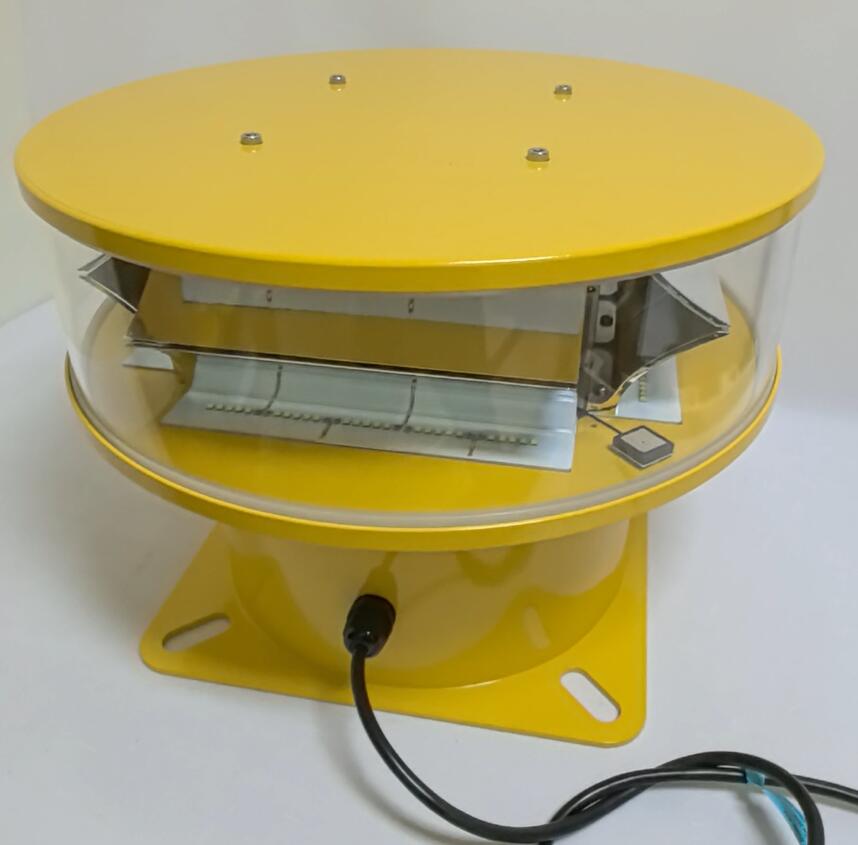The aircraft warning light is a crucial safety feature designed to prevent collisions between aircraft and tall structures, such as skyscrapers, telecommunication towers, and wind turbines. These high-intensity lights serve as visual markers, ensuring that pilots can identify obstacles, especially during low visibility or nighttime operations. This article explores the purpose, types, regulations, and technological advancements of aircraft warning lights, highlighting their indispensable role in aviation safety.
Why Are Aircraft Warning Lights Essential?
As air traffic increases and urban structures grow taller, the risk of mid-air and ground collisions rises. Aircraft warning lights mitigate this danger by:
Enhancing Visibility – They make tall structures easily detectable from a distance, reducing the risk of accidental impact.

Complying with Aviation Regulations – International and national aviation authorities mandate their installation on high-rise buildings and other obstructions.
Supporting Night and Low-Visibility Operations – During fog, rain, or darkness, these lights provide critical visual cues for pilots.
Types of Aircraft Warning Lights
Different structures require different lighting solutions based on height, location, and aviation guidelines. The most common types include:
1. Red Obstruction Lights
Used for structures below 200 feet (61 meters).
Emit a steady or flashing red glow.
Typically LED-based for energy efficiency and longevity.
2. White Strobe Lights
Installed on structures exceeding 200 feet.
Produce high-intensity flashes visible for miles.
Often synchronized to avoid confusion with other light sources.
3. Dual Lighting Systems
Combine red beacons for nighttime and white strobes for daytime.
Ensure visibility under all weather conditions.
Regulations Governing Aircraft Warning Lights
To maintain uniformity and safety, aviation bodies enforce strict guidelines:
ICAO (International Civil Aviation Organization) – Sets global standards for obstacle lighting.
FAA (Federal Aviation Administration) – Requires lights on structures above 50 feet near airports and 200 feet elsewhere.
EASA (European Union Aviation Safety Agency) – Mandates specific flash patterns and intensities.
Failure to comply can lead to penalties and increased collision risks.
Technological Advancements in Aircraft Warning Lights
Modern aircraft warning lights incorporate cutting-edge technology for better performance:
LED Adoption – More energy-efficient, durable, and brighter than traditional incandescent bulbs.
Solar-Powered Systems – Ideal for remote locations without direct power access.
Smart Monitoring – Sensors detect malfunctions and alert maintenance teams automatically.
Eco-Friendly Designs – Reduced light pollution with focused beams to minimize environmental impact.
Future Trends in Obstruction Lighting
As urbanization and air traffic grow, aircraft warning lights will evolve with:
AI Integration – Predictive maintenance and adaptive lighting based on real-time weather data.
Enhanced Synchronization – Improved flash patterns to avoid pilot disorientation.
Drone Compatibility – Adjustable lighting for low-altitude drone traffic.
The aircraft warning light is an unsung hero in aviation safety, silently preventing disasters by marking potential hazards. From towering skyscrapers to remote wind farms, these lights ensure that both manned and unmanned aircraft navigate safely. As technology progresses, their efficiency and intelligence will only improve, making the skies safer for everyone.
Whether seen as a distant red glow or a bright white flash, the aircraft warning light remains a vital guardian—protecting lives, structures, and the future of flight.

